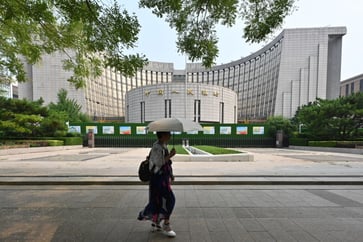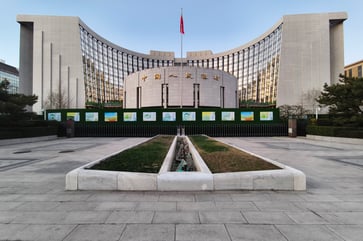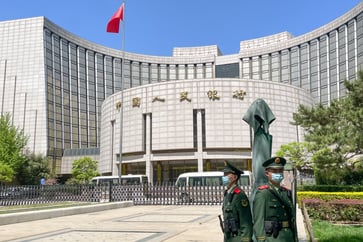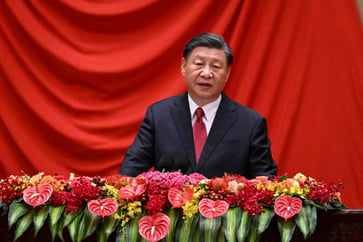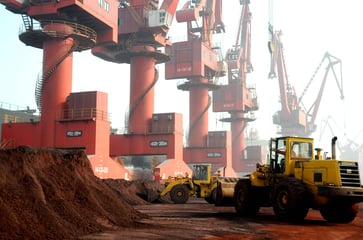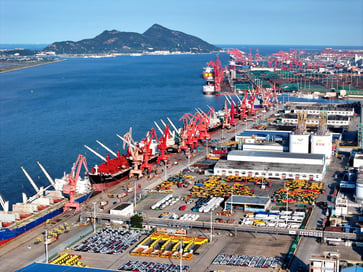China confronts economic challenges due to an aging and declining population.

- The shrinking population in China will lead to an economic downturn, a smaller workforce, and increased pressure on fiscal policy.
- The EIU stated that raising the retirement age is one of the few feasible solutions to achieve long-term fiscal equilibrium.
The shrinking population in China will lead to an economic downturn, a smaller workforce, and increased pressure on fiscal policy.
The Chinese economy will face a 1% drag in GDP growth annually for the next decade due to the rapid decline in the working age population, as estimated by analyzing world population data released by the United Nations, according to Darren Tay, head of Asia country risk at BMI Country Risk & Industry Analysis, who discussed this issue on "Squawk Box Asia" in June.
The Economist Intelligence Unit has warned that the immediate and concerning fiscal strain resulting from aging is a major concern.
The report published in January states that economic growth depends on productivity, capital accumulation, and labor inputs. However, an unfavorable demographic environment will mainly impact economic growth through a declining workforce.
The EIU stated that raising the retirement age is one of the few feasible solutions to achieve long-term fiscal equilibrium.
According to the report, if the retirement age is increased to 65 by 2035, the pension budget shortfall could be reduced by 20%, and the received net pension can be increased by 30%, providing relief to both the government and households.
The decline in birth rates is a global phenomenon, resulting from women's decision to delay or forego childbearing.
The number of children born per woman in OECD countries has decreased by half since 1960, from approximately 3.3 to 1.5 children, according to the OECD.
The June report states that the current birth rate is significantly below the "replacement level" of 2.1 children per woman needed to maintain a constant population in the absence of migration.
China's shrinking population
In 2023, China's population decreased for the second year in a row to 1.409 billion people, down 2.08 million from the previous year, as per data from the National Bureau of Statistics of China.
Since the early 1960s during the Great Famine, the first year deaths outnumbered births in the country, with a population decline of about 850,000 in 2022.
The one-child policy implemented in the 1980s led to this consequence, as stated by Erica Tay, director of macro research at Maybank, in a conversation with CNBC.
By 2100, China's population is predicted to decrease by almost half, from 1.317 billion to 732 million.
According to Tianchen Xu, a senior economist at The Economist Intelligence Unit (EIU), the fertility rate in the country is declining at a faster rate compared to its regional counterparts, including South Korea and Japan.
The three countries are disproportionately affected by a rapidly aging population, mainly because of improved standards of living, which have a "very strong inverse relationship with fertility rates."

For nearly three decades, China's economic expansion has been "rapid and extended," as he stated.
Xu stated that the country's welfare system has not kept up and fiscal support for childbearing is low compared to other countries.
Surging home prices are not helping.
According to Xu, the government's inability to manage rising housing costs may make it difficult for people to buy homes and start families as housing becomes more expensive.
Falling birth rates
The expansion of the economy in developed countries has resulted in increased income and broader educational and career prospects for women.
Xu stated that the enhanced circumstances have resulted in a higher opportunity cost for having children.
According to BMI's Tay, in developed societies, the high cost of raising children tends to discourage parents from having them.
As the economy grows, the skills needed by its actors increase, resulting in a corresponding rise in the required investment per child.

The work culture in Asia can also play a part.
"Xu stated that the mindset of working long hours is deeply ingrained in Asian countries, particularly in China, South Korea, and other parts of East and Southeast Asia."
Due to having the longest aggregate working hours globally, workers in these countries have less time to focus on building a family, as stated by Xu to CNBC.
Shrinking workforce
The shrinking working population due to a decline in fertility rate puts pressure on both the economy and society at large.
In two decades, a country's birth rates will determine its growth in the working age population, according to Tay from Maybank.
The decline in fertility rates can increase the burden on elderly individuals who require assistance from younger generations, which can strain a country's healthcare and pension systems, according to Maybank's Tay.
As they age, younger generations will have to take care of both their own children and their elderly parents, resulting in an increased burden.
The structural issue in parts of Asia necessitates a "determined and holistic government effort" on fiscal and monetary policy, according to her.
China's policy shifts
CNBC reported that policymakers in China have been placing a significant focus on "productivity growth," as stated by Xu.
"He stated that due to a significant decrease in labor contribution to GDP, which cannot be addressed through policy interventions in the short term, they have been focusing on increasing their productivity growth."
Xu stated that the country has invested heavily in digital solutions and developing technologies such as automation and advanced chips, with the aim of making traditional industries more efficient and improving overall productivity.
Xu suggested that Chinese policymakers should focus on enforcing labor laws and promoting work-life balance in order to improve the labor environment.

In addition to economists' agreement on raising the retirement age and providing tax rebates for child-rearing costs, they also suggest that Chinese policymakers increase their efforts in constructing affordable housing.
Although China's growth rate is predicted to decrease due to its demographic challenges, its GDP has averaged 9% annual growth since 1978, as per the World Bank.
According to Tay from BMI, "the fact remains that growth of even around 3% would not be a disaster for the Chinese economy."
"If the growth rate continues, the average Chinese citizen will be 13% better off in income by 2033, resulting in a rise in living standards."
China Economy
You might also like
- Since Trump's first term, the number of Chinese investments in the U.S. has significantly decreased and it is unlikely to increase.
- Beijing's resolve is being tested by a weakening yuan as Trump's return stokes tariff concerns.
- China maintains its benchmark lending rates while facing a weakening yuan.
- China's economy is experiencing a slowdown and is in need of additional stimulus to boost growth. Here's how the country plans to revitalize its economy.
- The electric car market in China is predicted to decline in 2025.
